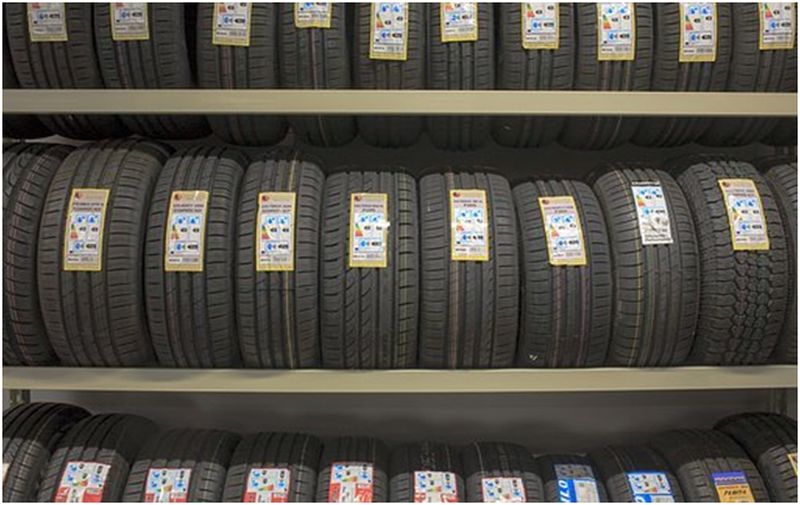Statistics show the average commuter travels about 20,000 to 25,000 kilometers per year in their car. A car is a mechanical device, and the average annual run will have wear on its parts, especially the tyres. With wear due to high speeds, high temperatures, and braking, the tyre is bound to wear out soon and lose its road grip.
Once every two to three years, the average car owner finds themselves at a workshop, looking to replace their car’s tyres. Most people rely on their regular mechanic’s expertise to select the right tyre for their vehicle, while some decide on brand reputation. Choosing your car’s new tyres is a big deal, and as a car owner, you should have some knowledge on how to read the prints on the rubber to know what you’re buying into, rather than only looking into the brand. Fortunately, we’ve compiled some tips to help you navigate the correct purchase when in the market for new tyres. Let’s take a look at a few.
1. Do you really need new wheels?
Tyre shopping can be a hefty expenditure, and it’s always good to make sure you’re not making a rushed decision when you’re about to spend a small fortune. Before you take the car into the workshop, a quick self-assessment can give you information on whether you need new tires or not.
Firstly, it’s essential to know that rubber has a shelf life, and any tyre has an expiration date even if it is barely used. The printon the rubber can give you the manufacturing date. An average tyre has an expiration date of six years from its manufacturing, and anything greater than that should be immediately replaced.
Secondly, you can visually assess the wear on your tyre. If the treads fall below a certain marking or the rubber bulges out due to wear; that’s your cue to take the car to a workshop and replace the wheels.
2. Understand your usage
Tyres are engineered to suit different terrains and conditions. Your average tyre cannot withstand snow or heavy rainfall, nor can it handle high speeds. Understanding your use is imperative – what car are you driving? What is the climate of your residential city/state? What kind of roads will you be driving your car on? What will be your average speeds?
Based on the answers to these questions, you can narrow your search down for new tyres. For instance, if you frequent rough routes,you can look up off-road tyres Cheshire and find the best tyres suited for your vehicle.
3. Keep your car maintained
Before having your tyres replaced, it’s essential to assess your car’s situation. Often, cars have alignment or axle issues due to which tyres wear out prematurely or certain parts wear out quicker than a counterpart. It is recommended you take your vehicle to a workshop and have these problems sorted before buying tyres.
4. Deciding a Budget
When setting your budget for a new set of tyres, it’s important to consider all the costs that go into a wheel change. For instance, a tyre with a cheaper price tag may only give you a 40,000km run, while an expensive one will perform with guaranteed safety for an extended period. It would help if you also considered installation as some tyres bear a higher installation cost than others. Keeping these factors in mind, narrow down your options and decide on a budget.
5. Reading Tyre Codes
Choosing a new tyre can be difficult for someone new to the game. However, at this stage, deciphering those letters and numbers punched onto the rubber can be a huge blessing and can help you make an informed decision about which tyre to select from a shelf of options.
Starting from the left, the first letter represents the tyre type. It shows the best use for which the tyre is suited. For instance, the letter ‘P’ represents passenger tyres. This means the tyre is fit to be used for passenger vehicles.
The next piece of information is the tread width which is represented inmillimeters. It shows the width the tyre will cover on the ground.
Following that is aspect ratio information. This number represents the ratio of section height against section width. Generally, a lower aspect ratio means better steering and road grip.
After that comes the construction type, which in most modern tyres is ‘R’ or radial construction. The number following construction represents the diameter information of the tyre. With that information, you can decide which rims will fit your new set.
The final two pieces of information are the load rating and speed rating. The load rating gives you information on how much load the wheel can bear, while the speed rating tells you about the car’s speed limit. The speed rating is represented by a letter that can be tallied against an index provided by the manufacturer to understand the speeds the tyres can withstand.
To choose the ideal replacement set, you can match this information with your car’s recommended tyre dimensions. Most manufacturers recommend getting tyres with factory specs to perform ideally as per their design.
5. Fuel Economy
An average user is looking to get the best mileage out of their car. In that case, it’s safe to go for newer tyres as they offer better mileage and add to the efficiency of a car’s performance. High-speed performance tyres, however, do not offer that.
6. Driving Comfort and Noise
A car will take you from point A to B regardless of the wheels loaded onto it. However, you’re not getting your money’s worth if driving comfort is compromised. Certain brands have compromised rubber qualities which contribute to an unsafe drive and cabin noise. A wobbly drive is undoubtedly a pain for the driver, and cabin noise is even more so for the passengers. Choosing quality tyres, in this case, can make the same journey quite enjoyable for both.
Conclusion
New tyres on your car are a long-term investment, and it’s important to choose them carefully. Before you enter the market, assess your tyres and whether you need to have them replaced. Have your car fixed for issues that are causing premature wear and tear. When in the market, narrow down your tyre selection based on the tyre codes, your use, your budget, and most importantly, on the degree of comfort they offer. Keeping these factors in mind, make the best possible choice for your car.
Article Submitted By Community Writer




